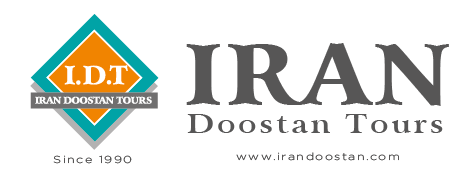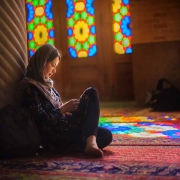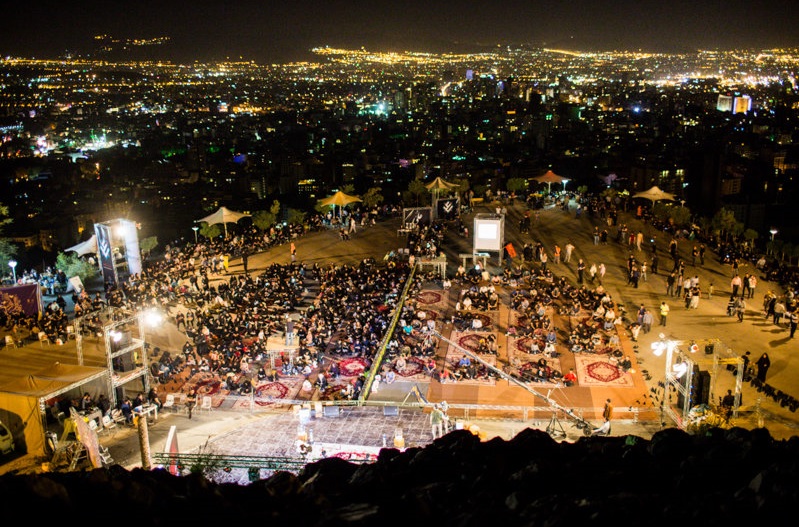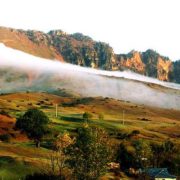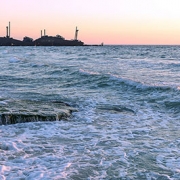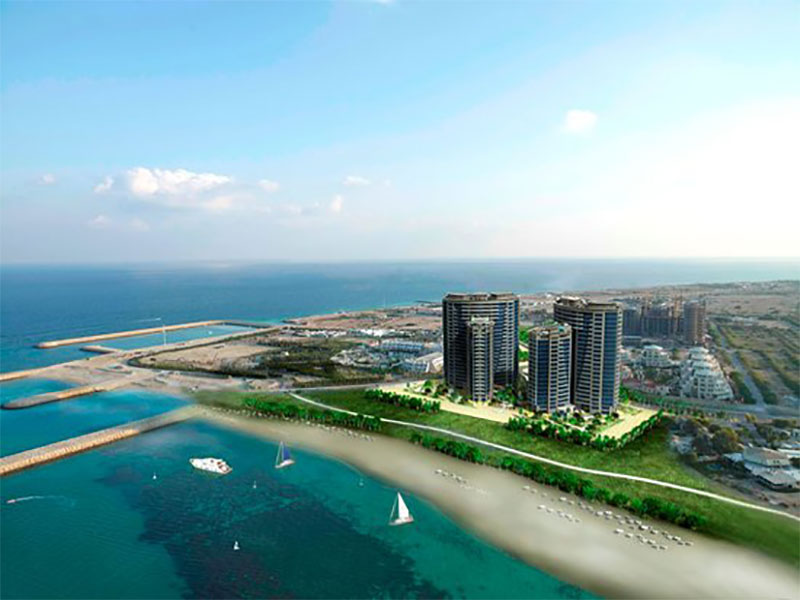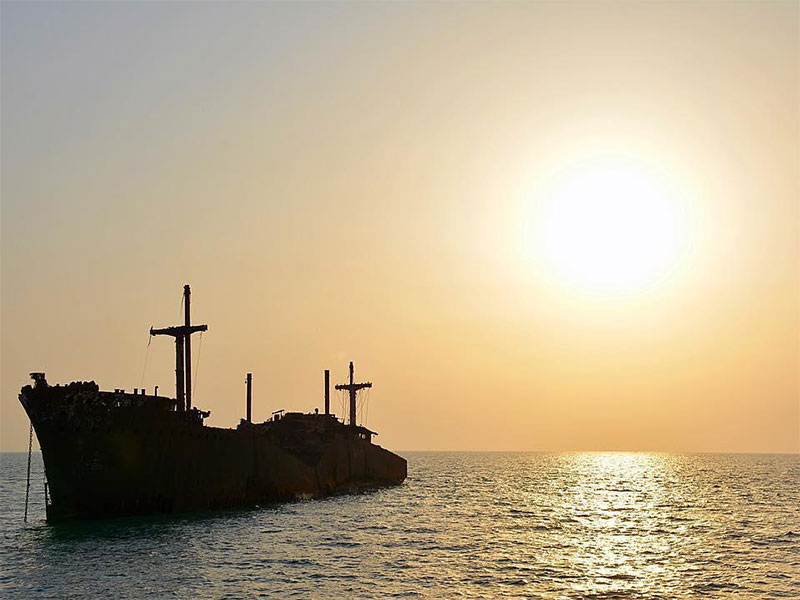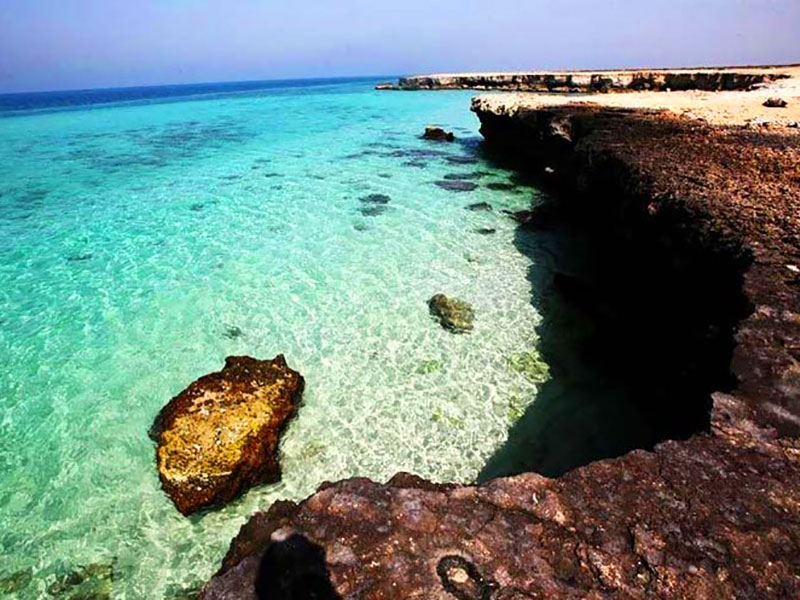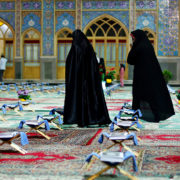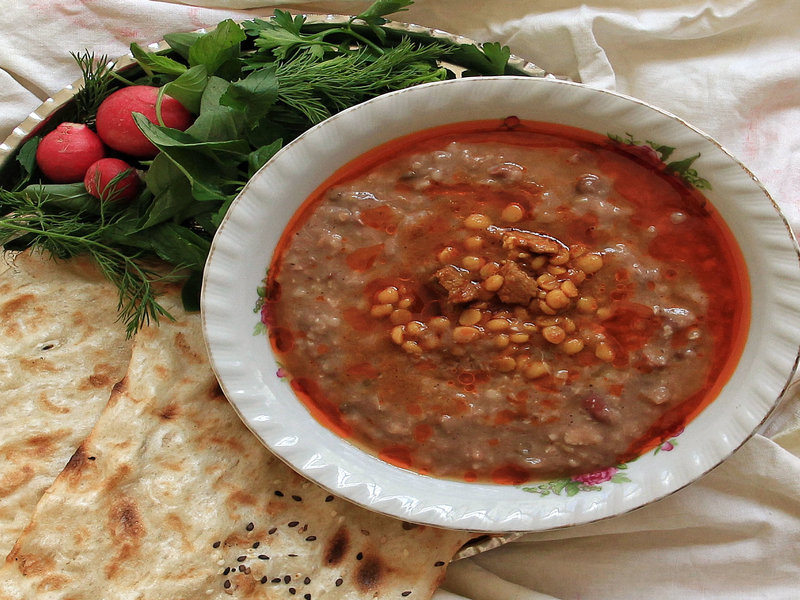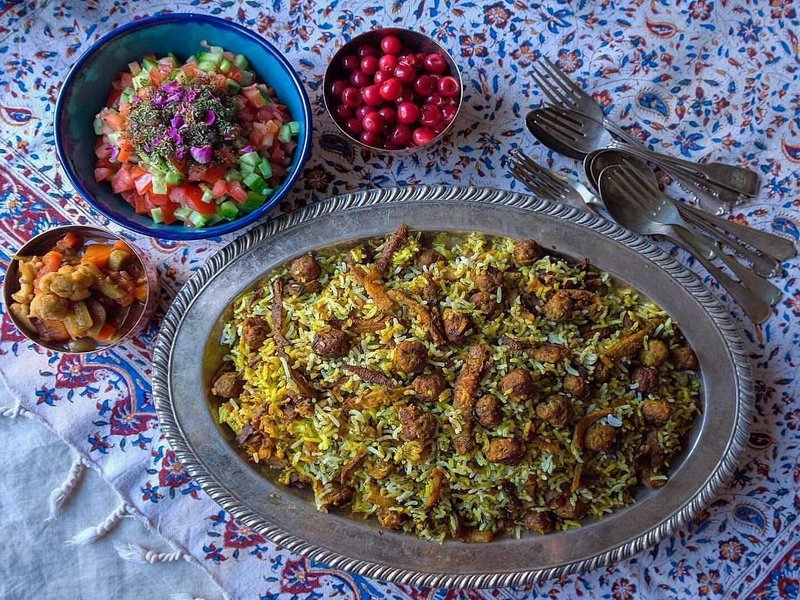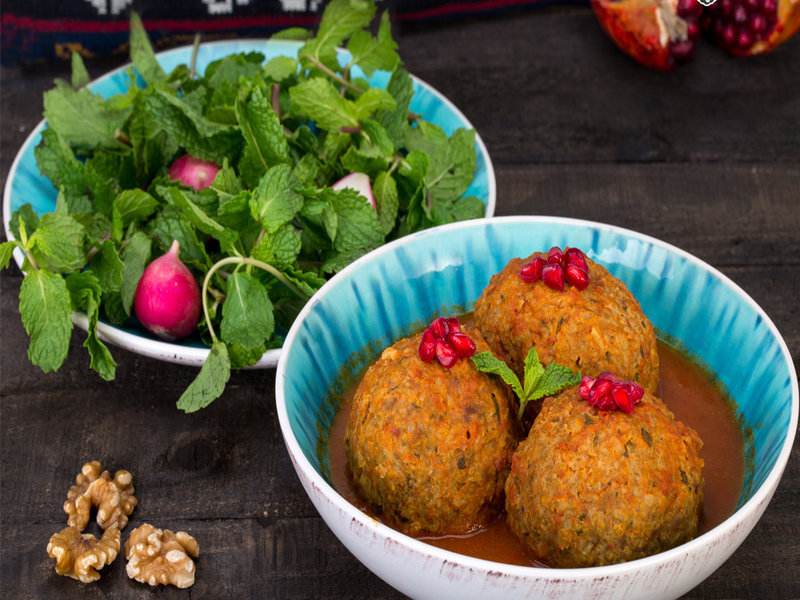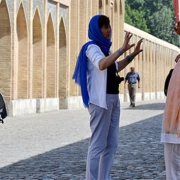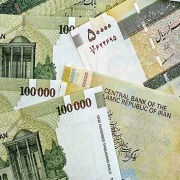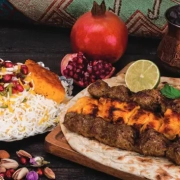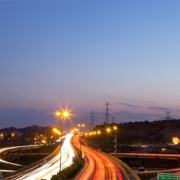Persian cuisine is not just ancient and cosmopolitan; it is also therapeutic for the body and soul. The legendary physician and philosopher Avicenna describes in his great book “The Canon of Medicine” the healing and beneficial aspects of different foods, fruits, and vegetables for the body. When you travel to Iran, you can learn more about Iran foods and drinks. Every city in each province of Iran has hundreds of local dishes for every season of the year. How fascinating is that? Therefore, we picked the most famous Persian dishes you must try on your visit to Iran.
Fesenjan
Fesenjan is one of the most popular stews, made with pomegranate sauce, walnut, and chicken or ground beef. It is a local food from the northern part of Iran and has a sweet and sour taste. In some regions, locals make this stew with meatballs or lamb. Adding orange zest, whole pomegranate seeds, butternut squash, or dried apricots is traditional in other parts. It is not a regular item on restaurant menus since it’s usually served on special occasions such as weddings or formal parties.
There is a wide variety of Iranian stews as famous Persian dishes. Each region of the country has its unique stew made of its own local and seasonal ingredients. The three main stews in Iran are Fesenjan, Gheymeh, and Ghormeh Sabzi, and all are served with Chelo (white, fluffy rice).
Iranians are proud of their skills in preparing rice, and there are different ways to cook them, such as Chelo, Polo, Abkesh, and Kateh. Chelo is fluffy Persian rice with some saffron rice on top. Polo is mixed rice usually served with chicken, lamb, beef, or fish. Zereshk Polo is one of the most popular Polos that has Persian barberries and saffron, and you mostly see it served with chicken. Another is dill and lima bean rice usually served with lamb shank next to the chicken. There is an individual meal called Tahchin that is entirely made with rice!
Tahchin
Tahchin is a kind of rice cake with four layers. First, the lowest layer is a mixture of cooked rice, yogurt, egg, and saffron. The second layer consists of flavored rice and Persian spices such as saffron or turmeric. The third layer contains cooked chicken pieces, and the last layer is spicy rice. Iranians, generally, are very fond of Tahdig. In Tachin, it is essential to add a crispy layer of Tahdig on the upper part of the Tachin to bring a touch of lusciousness to this traditional Iranian food.
Biryani
In addition to enjoying the gorgeous mosques, ornate domes, and ancient bridges in Isfahan, the Biryani is another highlight of this city. This dish is made with shoulder lamb and onions. First, the lamb is cooked through a particular process and then soon after fried. In the end, the lamb will be ground or chopped very finely. The result is a highly aromatic and colorful dish of meat and rice. Our lovely Isfahani locals serve Biryani on bread and decorate with some cinnamon on top.
Kebab
You will most definitely see Kebabs on the menus of restaurants since it is one of the most famous Persian dishes. Kebab is grilled meat such as filet mignon, chicken, ground beef, or fish served with Chelo with grilled tomato and pepper. The most famous Persian kebabs you come across in Iran are Joojeh Kebab and Koobideh, Iranians’ all-time favorites, and they sometimes have Naz Khatoon and Dough beside their dish. During your travel to Iran, do not miss this tasty meal!
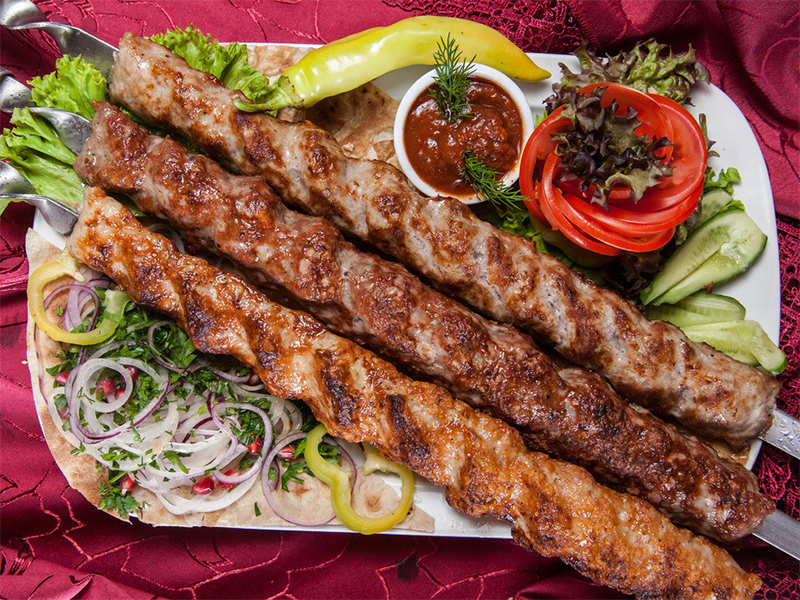
Persian Dishes – In the Iranian restaurant menus you will mostly see Kebabs; one of the bests in Persian Cuisine.
Ghormeh Sabzi
The delicious Ghormeh Sabzi, or as some people might call it, the king of the stews, is on another level. Ghormeh Sabzi is the hallmark of Iranian food that dates back more than 2000 years. You would rarely find someone who does not love Ghormeh Sabzi. Ghormeh Sabzi is served in most restaurants as lunch or dinner. The ingredients are kidney beans, a mixture of herbs, and dried limes. Nothing surpasses Ghormeh Sabzi when it comes to its taste and texture as a dish.
Gheymeh Nesar
Imagine the taste of Persian barberries, pistachio, cinnamon, rose water, turmeric, and saffron. It will take you to the magnificent feast of a Persian king in his exotic palace surrounded by gorgeous decorations on the walls and silk carpets on the floor. Gheymeh Nesar of Qazvin is one of the bests in Persian Cuisine. It is a food mostly made for special events. The topping of the rice has almond, pistachio, orange pill slices, Persian barberries, and lamb meat, which creates an unforgettable taste.
Gheymeh
The other favored stew is Gheymeh, but this one is pretty common in most restaurants in the country. The word Gheymeh comes from how the meat is cut into small cubes in this recipe. Gheymeh is a traditional and popular Iranian stew with saffron potatoes, served with either white or aromatic rice. The main ingredients of this tasty stew are tomato paste, lintels, dried lime, and beef with the addition of French fries or eggplants on top instead. Khoresht-e Gheimeh can turn into Gheymeh Bademjan by adding eggplants to the stew.
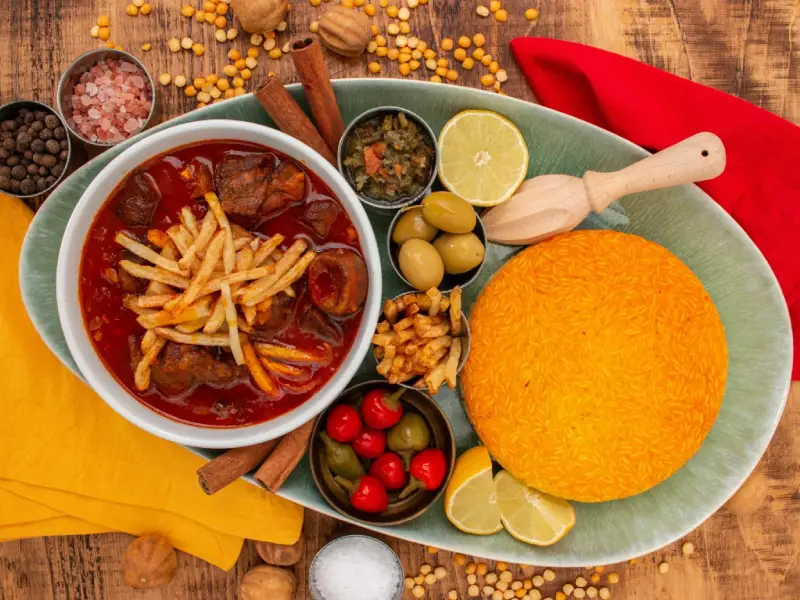
Persian Dishes – A traditional and popular Iranian stew with saffron potatoes
Dizi or Abgoosht
Dizi is quite different from other foods, and that’s why Abgoosht is among the most famous Persian dishes in Iran. The ingredients are lamb, tomato, onion, potato, chickpeas, and different seasonings such as turmeric. The juice is separately served, so you can dip Persian bread in it and enjoy it. The solid materials will be mashed and mixed and served with broth. Usually, you can eat pickles or yogurt with Dizi and fully enjoy the fascinating taste of traditional Persian food.
Ash Reshteh
Ash Reshteh is the traditional Iranian version of noodle soup, cooked with beans, peas, and vegetables. With a strong taste of the dried mint powder. The soup is garnished with a salty dairy sauce named Kashk. That’s why it also is called Ash-e Kashk. The name makes sense, as “ash” translates to thick soup and “reshteh” to noodle! Ash Reshteh is a great option that will leave you satisfied and full of energy for quite some time!
Kofte Tabrizi
If you are visiting Tabriz during your stay in Iran, make sure you try the most famous Persian dish of the city, Kofteh Tabrizi. Kofte Tabrizi is a super meatball made of ingredients such as rice, ground beef, yellow split peas, leeks, mint, parsley, onion, walnuts, dried apricots, barberries, and Persian spices, cooked in tomato paste. Some like to stuff the meatballs with prunes, walnuts, and fried onions until it cooks slowly to perfection.
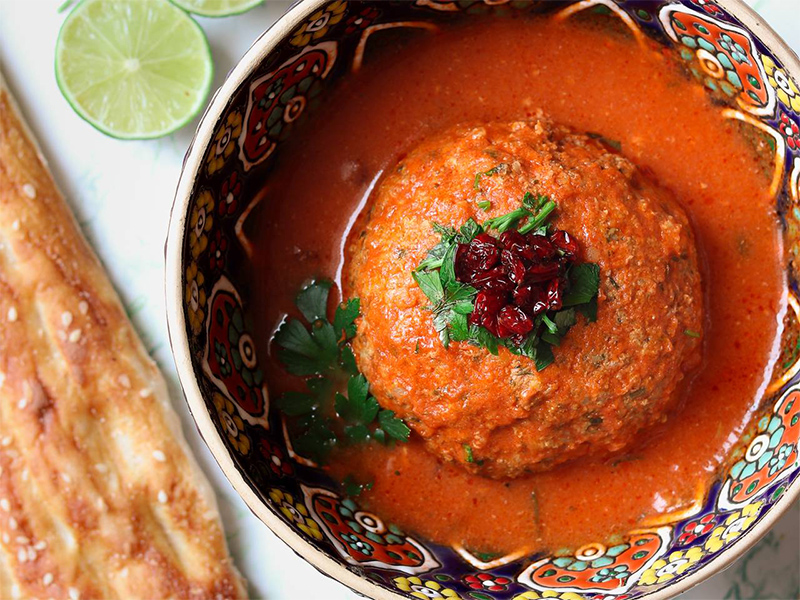
Persian Dishes: Kofte Tabrizi
Are you planning to travel to Iran? Check out our Iran tours.
